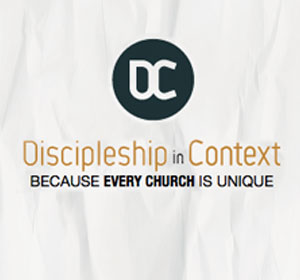
Moving from Financial Deficit to Abundance
Somewhere I picked up the line, “Your vision will always outpace your resources.” Can you relate? Do you find yourself in the position where you always need more money for more ministry? For the majority of us the answer is a resounding YES! When it comes to money there always seems to be more month than money. Unfortunately, great opportunities come and go simply because we lack the resources to take advantage of them.
What if it doesn’t have to be this way! What if the issue isn’t a lack of available resources? What if the lack of resources is a leadership issue? For many of us I believe this is the case. Let’s be honest. Many of us lack the skill and competency to move from a deficit to an abundance of resources for kingdom impact. It isn’t that we are bad leaders. It just happens to be where we are at and the good news now is we can do something about it.
Where do we start? Why not determine that the one big thing for this next year is going to be moving our financial needle from deficit to abundance. Here are some thoughts and best practices on getting there.
Start with Vision Clarity
When I assess the causes I’m giving to, there is always a clear and compelling vision behind it. I have no question what problem my resources will help solve. One of the ministries I support is a fast growing church planting movement among the Iranians. One way I can support them is by providing New Testaments at the cost of $6.00 each. For every New Testament we put in the hand of an Iranian, there are five to six Iranians who come to Christ.
Often when I do vision clarity and generosity work with churches I tell them this story and ask them, “What’s your Iran?” General appeals for resources get a general response. Abundance begins when we give people a compelling reason to give within the local church. People want to be a part of something significant. They want to do more than turn on the lights. They want to solve a problem that creates a better world.
Budget on Last Year’s Income
It doesn’t stop with vision. If we are going to have an abundant harvest of resources to invest in the kingdom, we must look at how we operate. A common practice in setting the church budget is to take last year’s receipts and add a certain percentage to that number based on anticipated growth in attendance and giving. If last year’s income was $500,000 we may anticipate a 10% growth in giving, so we set our new budget at $550,000. This is not necessarily a best practice or even a good practice.
What if instead we budget on last year’s income or even went a step further and budgeted on less than last years budget? What if instead of budgeting on $550,000 or even $500,000 we budged on $450,000?
What if while we budgeted on $450,000, our giving grows to $550,000? Now we get to live in abundance. Instead of fighting for budget we have a surplus to invest in the kingdom, margin for the lean times, and/or a head start on the next big capital need.
Rethink Your Percentages
In addition to budgeting on last year’s numbers, we need to rethink how we spend our budgets. We have found a consistent model for budget planning that allocates 50% on staffing, 25% on facilities, and 25% on ministry and missions. Whenever our staffing cost goes up, it has to come from somewhere. If the cost of our facilities increases, then a church has to cutback on ministry, staffing, raise additional dollars, or they enter into a deficit.
Driving down your numbers can be another way of creating an abundance of financial resources. Some churches have found the best way to do this is by lowering their staffing cost. This doesn’t mean that they pay their staff less and reduce the level of their benefits. It simply means that they expect staff to equip volunteers to lead ministries.
These churches often operate with 35% to 40% of their budget going to staff. This is radically different than how I was taught to budget. We budgeted to grow by adding staff even when we couldn’t afford it. We would rationalize it by saying things like, “A good staff member always pays for himself or herself.” Maybe you can relate. To be completely honest, it seldom or almost never worked out for us. We usually ended up cutting something or someone we deemed less strategic. It was the constant proverbial rearranging of the deck chairs on the Titanic.
Develop a Robust Leadership System
You can’t reduce your investment in staff without developing a robust leadership system. To do this we need volunteers that can lead. Paul put it this way, “So Christ himself gave the apostles, the prophets, the evangelists, the pastors and teachers, to equip his people for works of service, so that the body of Christ may be built up until we all reach unity in the faith and in the knowledge of the Son of God and become mature, attaining to the whole measure of the fullness of Christ” (Ephesians 4:11-13, NIV).
In our work with churches across the nation it’s common to find an abundance of volunteers, but a deficit when it comes to volunteers who are actually leading. Churches that are able to dial back on staffing have an intentional process in place to raise-up an abundant harvest of leaders who can serve in strategic places eliminating the need for paid staff in certain places.
Create a Generous Disciple Pathway
At the end of the day we will never experience abundance if we don’t develop generous disciples. Disciple making at its core is about worldview transformation. We need to disciple people to think about their resources differently. For abundance to take place, we need the mind of Christ. A generous disciple pathway will help disciples navigate toward this new mindset regardless of where they begin. Imagine an intentional pathway that helps occasional givers become regular givers, and regular givers to become tithers, and tithers to become extravagant givers.
If we did this alone it would have an incredible impact on our ability to impact the kingdom. At the same time let’s face the fact that creating generous disciples without the other practices may not lead to abundance. Abundance is the result of a discipline approach that includes all of the practices mentioned above.
Conclusion
Chances are your financial systems are perfectly designed to get the results you are currently getting. Making lasting changes aren’t a matter of doing business as usual. We often believe that change is the result of our wills. Unfortunately, we don’t know what we don’t know.
Lacking the skills or competency as a leader to create abundance isn’t a failure. Failing to reach out to those who can help you learn new skills or competencies can be. Don’t be a leader that says that you will figure it out and don’t. There’s too much at stake.
Start by using the Generosity Dream Tool to dream a new generosity dream that includes an abundant harvest of resources for kingdom impact. Don’t stop there. Reach out for help! Make creating abundance for kingdom impact your one big thing this year. I promise you that it will have an incredible impact now and in the future.
Want to learn more about moving from financial deficit to abundance? Connect with an Auxano Navigator and start a conversation with our team.

Tags: David Putman, Generosity, Generosity Dream Tool, abundance












